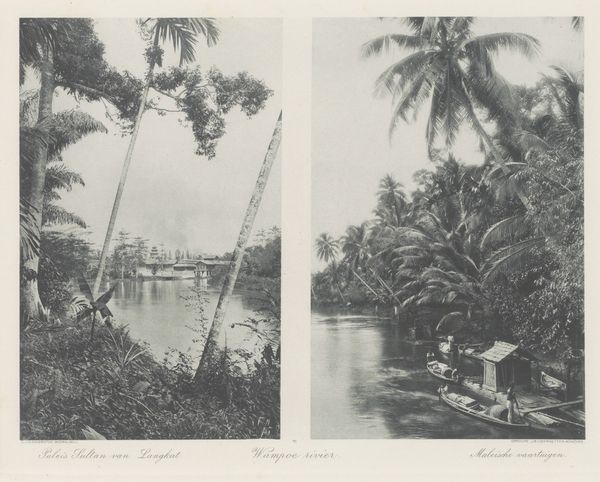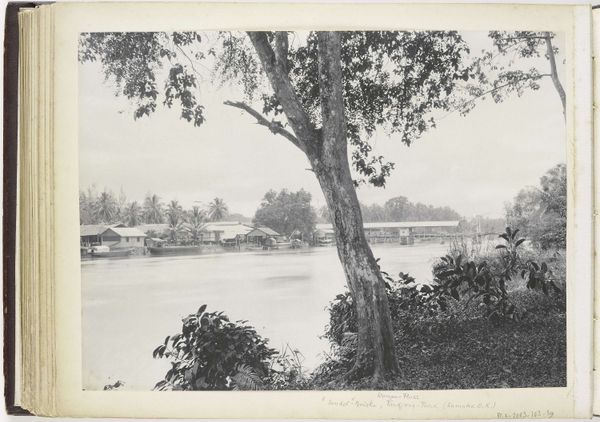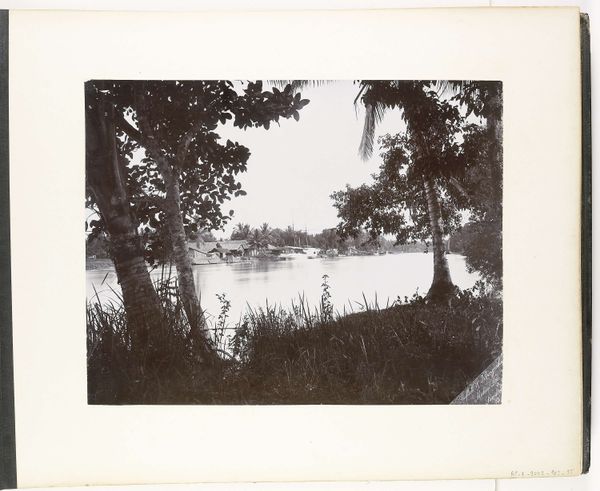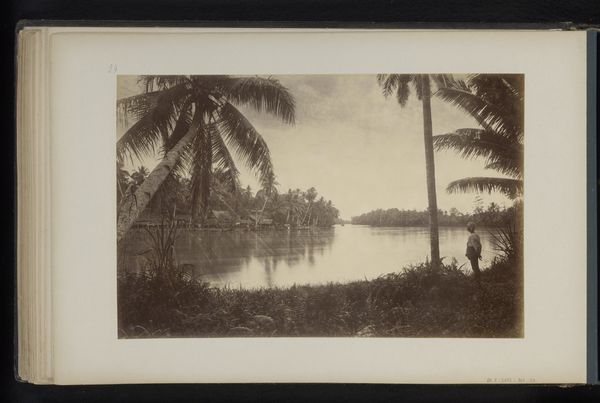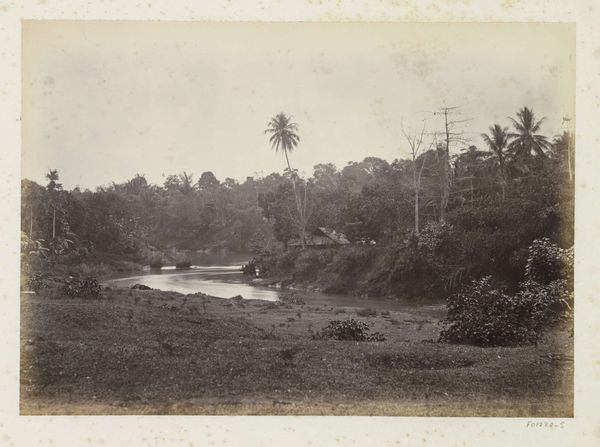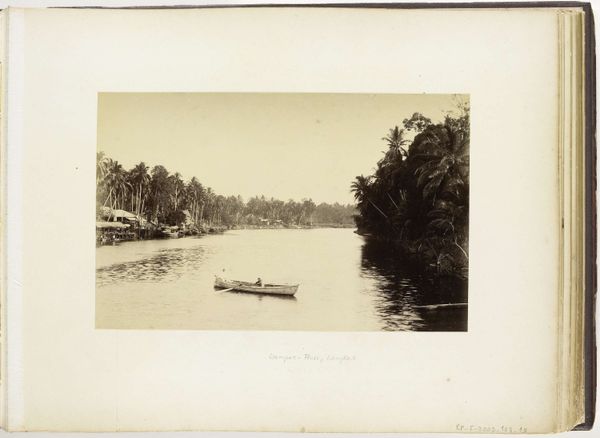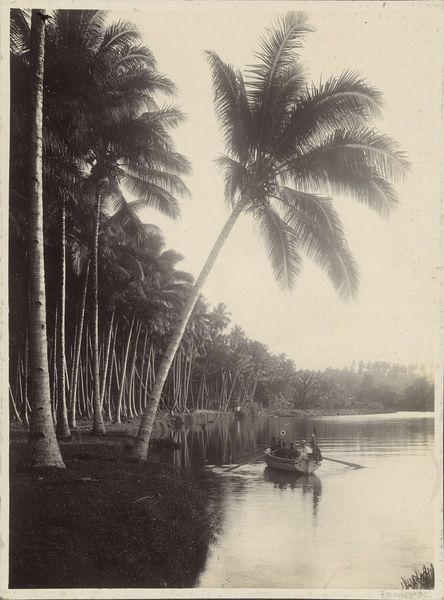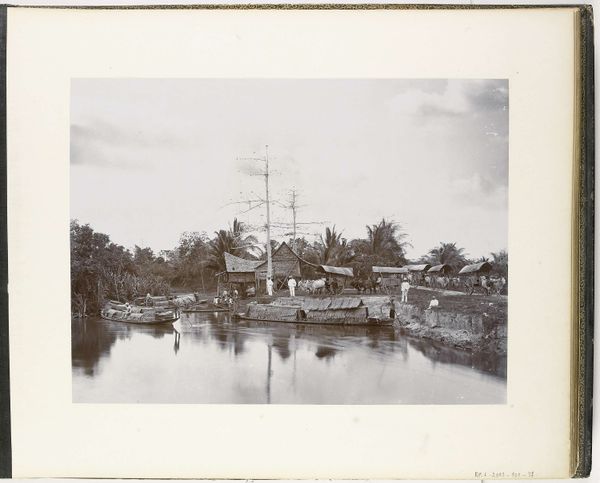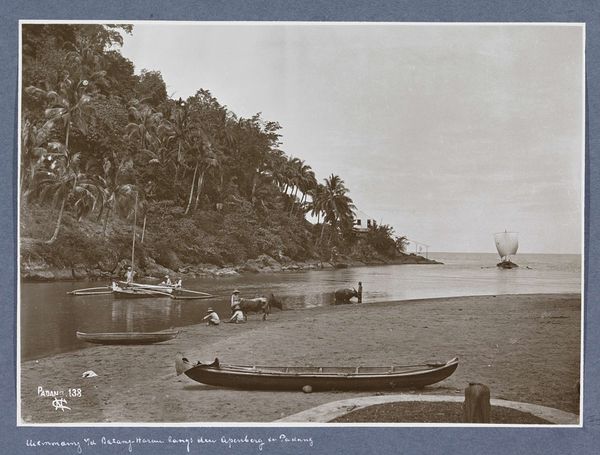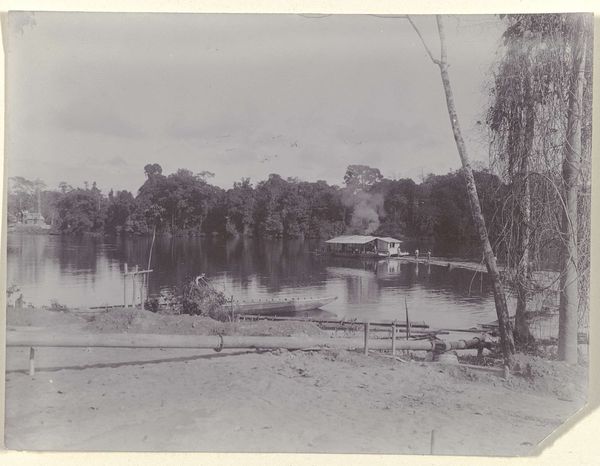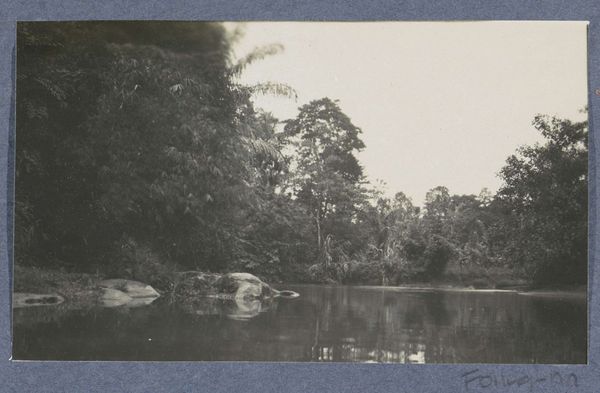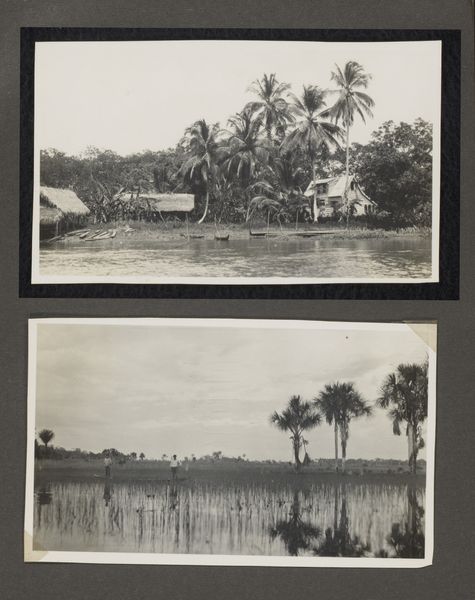
Gezicht op de oever van de Wampoe-rivier (?), Tandjong Poera, Langkat Sumatra c. 1900 - 1905
0:00
0:00
heinrichernstco
Rijksmuseum
photography
#
landscape
#
photography
#
orientalism
Dimensions: height 225 mm, width 305 mm
Copyright: Rijks Museum: Open Domain
Curator: Here we have a photograph entitled "Gezicht op de oever van de Wampoe-rivier (?), Tandjong Poera, Langkat Sumatra," dating from around 1900 to 1905, attributed to Heinrich Ernst & Co. It's a landscape view with clear indications of orientalist perspectives prevalent at the time. Editor: My initial thought? Stillness. There’s a hazy, almost dreamlike quality to it. The way the water reflects the trees—it's as though the scene is breathing quietly. I immediately feel calm. Curator: That stillness you're picking up on speaks, perhaps unintentionally, to the colonial gaze often embedded within orientalist works. The framing tends to reduce a place to its aesthetic appeal, ignoring the social and political complexities inherent to it. What looks like a peaceful river scene carries within it the weight of imperial power dynamics. Editor: Right, that’s heavy... though, I must admit, the textures are captivating! The rough-hewn wood of the boats, the tangled vegetation, even the subtle gradations of light and shadow...they’re all singing a rustic song. Does that make sense? Curator: It does. These photographic firms, while operating within a colonial framework, still offered some insights. For instance, observing how the built structures, that little house for example, harmonizes within the local ecosystem shows ways that the inhabitants had adapted to and shaped their environment. We should examine those types of relationships, rather than simply accepting superficial representations. Editor: That’s a valid observation, I hadn’t noticed how deliberately unobtrusive the housing seemed to be. It begs the question: Who were the people connected to those boats? What kind of trade was conducted, and were there exploitative or symbiotic components at play in that industry? Now you've completely changed the context for me. I can’t help but look at that boat not only as beautiful, but as representative of something greater, a node in the economic machine of the time. Curator: Precisely! By asking these questions, we push against the exoticizing impulse of the image. These landscapes need not merely function as passive backdrops or sites of picturesque escape but can instead be understood as historically contingent spaces actively shaped by human agency, inequity and resilience. Editor: Wow, well, I came in ready to chill on a peaceful riverbank and now I’m heading for the library. It sounds as though there are complex systems to study if we can challenge first impressions. Thanks for illuminating things for me! Curator: Likewise, your intuitive feel for the scene, while seemingly simple, pointed out that sensory aspects matter greatly and encouraged further exploration. Thank you!
Comments
No comments
Be the first to comment and join the conversation on the ultimate creative platform.

